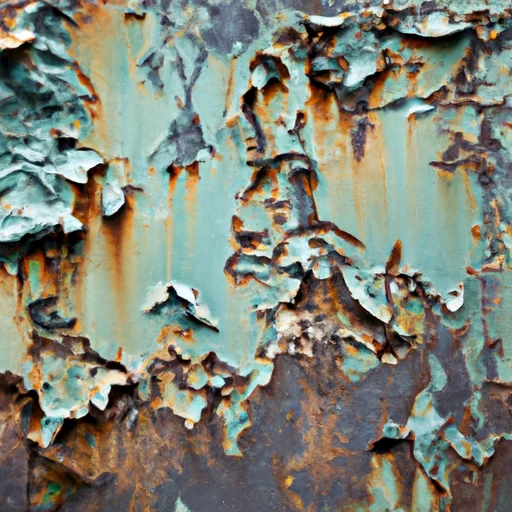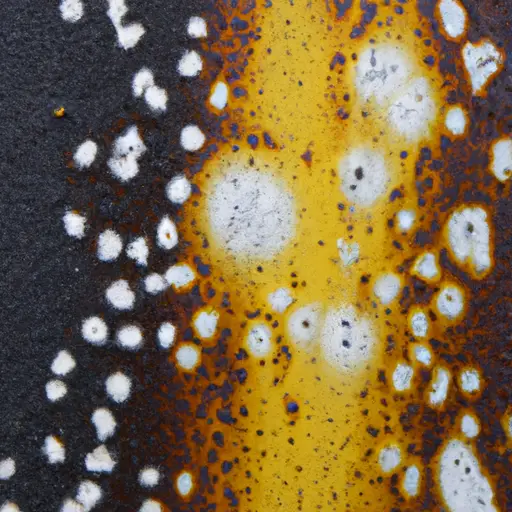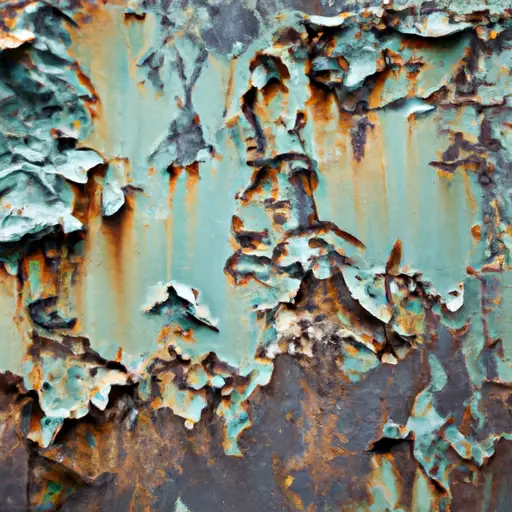Hello there! Have you ever wondered about the best type of paint to use on galvanized metal? Well, we’ve got some great news for you. In this article, we’ll be discussing the different options available for painting galvanized metal and sharing some tips and tricks to help you achieve a professional finish. Whether you’re looking to spruce up your outdoor furniture, refresh your metal roof, or add a pop of color to your galvanized fence, we’ve got you covered. So, let’s dive right in and explore the world of content paint for galvanized metal!
Curious to know what type of paint works best on galvanized metal? Want to discover the secrets to achieving a long-lasting, durable finish? Look no further! In this article, we will delve into the various types of paint that are suitable for galvanized metal surfaces and discuss their advantages and disadvantages. We will also provide you with some essential tips on prepping your galvanized metal before painting and guide you through the process of applying the paint for a flawless result.
Whether you’re a DIY enthusiast or a professional painter, this article will equip you with the knowledge you need to tackle your next galvanized metal painting project with confidence. So, let’s get started and uncover the wonders of content paint for galvanized metal!

Table of Contents
What is Galvanized Metal?
Galvanized metal refers to metal surfaces that have been coated with a layer of zinc through a process known as galvanization. This protective coating provides a barrier against corrosion and rust, making galvanized metal popular for various applications, including outdoor structures, roofing, fences, and electrical conduits. The zinc coating acts as a sacrificial layer, meaning that it corrodes in place of the underlying metal, thus prolonging the life of the galvanized metal.
Galvanized metal as a protective coating
Galvanized metal is widely used for its superior resistance to rust and corrosion. The combination of the underlying metal and the zinc coating creates a durable and long-lasting surface that can withstand harsh environments, extreme temperatures, and exposure to moisture. This makes galvanized metal an ideal choice for outdoor applications where protection against the elements is essential.
Process of galvanization
The process of galvanization involves immersing the metal surface in a bath of molten zinc, which adheres to the metal and forms a protective layer. There are two main methods of galvanization: hot-dip galvanizing and electro-galvanizing.
Hot-dip galvanizing is the most common method, where the metal is dipped into a bath of molten zinc at a temperature of around 460 degrees Celsius. This process creates a thick layer of zinc that provides excellent corrosion resistance.
Electro-galvanizing, on the other hand, involves immersing the metal into an electrolyte solution along with a zinc anode. An electric current is then applied, causing the zinc to bond with the metal surface. This method allows for a thinner layer of zinc to be applied and is commonly used for smaller items or when a smooth finish is desired.
Challenges of Painting Galvanized Metal
While galvanized metal is highly resistant to corrosion, it poses unique challenges when it comes to painting. The properties of the zinc coating can make it difficult for paint to adhere properly, resulting in an uneven finish and reduced paint durability. Understanding these challenges and using the right techniques can help overcome these obstacles.
Incompatibility of paint with galvanized surface
One of the main challenges in painting galvanized metal is the incompatibility between regular paint and the zinc-coated surface. The zinc surface is relatively smooth and does not provide enough texture for paint to adhere effectively. This can result in paint peeling, blistering, or flaking off the galvanized metal.
Insufficient adhesion of paint to galvanized metal
Another common issue when painting galvanized metal is insufficient adhesion of the paint to the surface. The zinc coating is naturally non-porous, which makes it difficult for paint to penetrate and bond with the metal. Without proper adhesion, the paint can easily chip or scratch off, leaving the underlying metal exposed to the elements.


Preparing Galvanized Metal for Painting
To achieve a long-lasting and durable paint finish on galvanized metal, proper surface preparation is crucial. These steps ensure that the paint adheres effectively to the metal surface and maintains its integrity over time.
Cleaning the surface
Before painting, it is essential to thoroughly clean the galvanized metal surface to remove any dirt, dust, or debris. This can be done using a mild detergent solution and a soft brush or sponge. Rinse the surface with clean water and allow it to dry completely before proceeding with the next steps.
Removing dirt, grease, and contaminants
In addition to general cleaning, it is important to remove any grease or oil from the galvanized metal surface. These contaminants can hinder paint adhesion and result in an uneven finish. Use a suitable degreaser or solvent to remove any oily residues, and ensure that the surface is completely clean and dry before proceeding.
Sanding and roughening the galvanized coating
To promote better adhesion, it is necessary to roughen the smooth zinc surface. This can be done by lightly sanding the galvanized metal with fine-grit sandpaper. Be careful not to sand too harshly, as excessive sanding can damage the zinc coating. The aim is to create a slightly textured surface that allows the paint to bond effectively.
Primer for Galvanized Metal
Using a high-quality primer specifically designed for galvanized metal is crucial to ensure proper paint adhesion and longevity. The primer acts as a bonding agent between the metal surface and the paint, enhancing the overall durability and finish of the painted galvanized metal.
Importance of using a primer
Applying a primer is essential when painting galvanized metal as it helps to create a strong bond between the paint and the zinc coating. The primer forms a protective layer that improves the adhesion of the paint, reducing the chances of peeling, flaking, or blistering over time. It also helps to even out the surface and enhances the color of the paint.
Choosing the Best Paint for Galvanized Metal: Top Recommendations
When selecting a primer for galvanized metal, it is important to choose a product specifically formulated for this surface type. Look for a primer that is rust-inhibitive, alkali-resistant, and compatible with the type of paint you plan to use. Additionally, opt for a primer that offers good adhesion and corrosion resistance to ensure optimal results.
Application techniques for optimal adhesion
To achieve the best results with the primer, follow the manufacturer’s instructions regarding application techniques. Typically, the primer should be applied in thin, even coats using a brush or roller. Avoid applying the primer too thickly, as this can result in poor adhesion and an uneven paint finish. Allow the primer to dry completely before applying the paint.

Painting Techniques for Galvanized Metal
Choosing the right paint and applying it correctly are crucial steps in painting galvanized metal. Choosing the appropriate paint type, applying it in thin, even coats, and considering factors such as temperature and humidity can ensure a successful and long-lasting paint finish.
Choosing the appropriate paint type
When selecting paint for galvanized metal, opt for a high-quality paint specifically formulated for this surface. Look for paint that offers excellent adhesion to metal and is designed for exterior applications. Oil-based paints or epoxy paints are commonly recommended for painting galvanized metal due to their durability and resistance to weathering.
Applying the paint in thin, even coats
To achieve a smooth and even paint finish, it is important to apply the paint in thin layers. Avoid applying thick coats of paint, as this can lead to uneven drying, drips, and an overall unappealing finish. Instead, apply multiple thin coats, allowing each layer to dry completely before applying the next. This will ensure proper adhesion and enhance the durability of the painted surface.
Consideration of temperature and humidity
When painting galvanized metal, take into account the ambient temperature and humidity levels. Extreme temperatures or high humidity can affect the drying time and adhesion of the paint. Ideally, paint in temperatures between 50 and 90 degrees Fahrenheit (10 to 32 degrees Celsius) and in low humidity conditions. Follow the paint manufacturer’s guidelines for specific temperature and humidity requirements.
Common Mistakes to Avoid
To ensure a successful paint finish on galvanized metal, it is important to avoid common mistakes that can compromise the adhesion and durability of the paint.
Using incompatible or low-quality paint
Using paint that is not specifically formulated for galvanized metal can result in poor adhesion and premature paint failure. Avoid using general-purpose paints or those designed for other surfaces. Similarly, using low-quality paint can result in an unsatisfactory finish and reduced longevity. Invest in high-quality paint products that are suitable for galvanized metal.
Neglecting proper surface preparation
Surface preparation is a crucial step in painting galvanized metal. Neglecting to clean the surface thoroughly, remove grease or contaminants, or roughen the zinc coating can lead to adhesion issues and paint failure. Take the time to follow the recommended surface preparation steps before applying the primer and paint.
Applying excessive or uneven coats of paint
Applying too much paint or applying it unevenly can lead to a variety of issues, including uneven drying, drips, and poor adhesion. To avoid these problems, apply thin, even coats of paint, allowing each layer to dry completely before proceeding. This will result in a smooth and durable paint finish on the galvanized metal.
Tips for Long-lasting Results
Successfully painting galvanized metal requires proper preparation and selection of suitable products. To ensure long-lasting results and maintain the aesthetic appeal of the painted surface, consider the following tips:
Regular inspection and maintenance
Regularly inspect the painted galvanized metal for any signs of paint chips, scratches, or damage. Promptly repair any areas that require touch-ups to prevent further deterioration and exposure of the underlying metal. Conduct routine cleaning and maintenance to remove dirt, debris, or corrosive substances that may compromise the paint’s integrity.
Repairing any paint chips or damage promptly
If you notice any paint chips, scratches, or damage to the painted surface, it is important to address them promptly. This may involve sanding and repainting the affected areas to ensure proper protection and maintain a uniform appearance. Ignoring paint chips can lead to accelerated corrosion and compromise the overall longevity of the painted galvanized metal.
Avoiding abrasive cleaners or harsh chemicals
When cleaning painted galvanized metal, avoid using abrasive cleaners or harsh chemicals that can damage or strip away the paint. Instead, opt for mild detergents or cleaners specifically formulated for painted surfaces. Use soft brushes or sponges to gently clean the surface, and rinse thoroughly with clean water.
Special Considerations for Outdoor Applications
When painting galvanized metal for outdoor applications, certain factors need to be taken into consideration to ensure optimal protection and longevity.
Protection against rust and corrosion
While galvanized metal naturally provides good resistance against rust and corrosion, it is still important to apply a protective paint finish for additional durability. The paint acts as a barrier against environmental elements, such as rain, snow, UV rays, and saltwater, which can accelerate metal corrosion. High-quality, weather-resistant paints with rust-inhibitive properties are recommended for outdoor applications.
Choosing weather-resistant paints
As outdoor structures are exposed to various weather conditions, it is important to choose paints that are specifically designed for exterior use and offer excellent weather resistance. These paints are formulated to withstand temperature fluctuations, moisture, UV exposure, and other environmental factors that can cause paint deterioration. Consider consulting with a paint professional to select the most suitable paint for your specific outdoor application.
Applying additional protective clear coats
To further enhance the durability and protection of the painted galvanized metal, consider applying additional protective clear coats. Clear coats provide an additional layer of protection against scratching, UV rays, and other environmental factors. They also enhance the glossiness and appearance of the painted surface. Follow the manufacturer’s instructions when applying clear coats, and allow sufficient drying time between coats.
Safe Handling and Storage of Paint
When working with paint, it is important to prioritize safety and handle the materials properly. Follow these guidelines to ensure safe handling and storage of paint and related materials.
Proper ventilation and protective gear
When using paint, ensure that the area is well-ventilated to avoid inhaling harmful fumes. Wear protective clothing, gloves, and safety goggles to minimize skin contact and prevent any potential eye injuries. Follow all safety instructions provided by the paint manufacturer.
Storing paint in suitable conditions
Proper storage of paint is essential to maintain its quality and extend its shelf life. Store paint containers in a cool, dry place, away from direct sunlight and extreme temperature fluctuations. Make sure the lids are tightly sealed to prevent air from entering, which can cause paint to dry out or deteriorate. Avoid storing paint near heat sources or flammable materials.
Disposing of paint and related materials responsibly
Dispose of paint and any leftover materials responsibly, following local regulations and guidelines. Avoid pouring excess paint down the drain or disposing of it in regular household waste. Look for local recycling programs or hazardous waste disposal facilities that accept paint. If there is any remaining paint in the can, allow it to dry out completely or use a paint hardener before disposal.
Conclusion
Successfully painting galvanized metal requires proper preparation and selection of suitable products. By following the recommended techniques and avoiding common mistakes, the painted finish can provide long-lasting protection and enhance the aesthetic appeal of the galvanized metal.
By understanding the challenges associated with painting galvanized metal, choosing the right primer and paint, and employing proper application techniques, you can achieve a durable and visually appealing paint finish that withstands the test of time.
Regular maintenance and careful consideration of outdoor factors will help ensure the continued protection and longevity of the painted galvanized metal.


